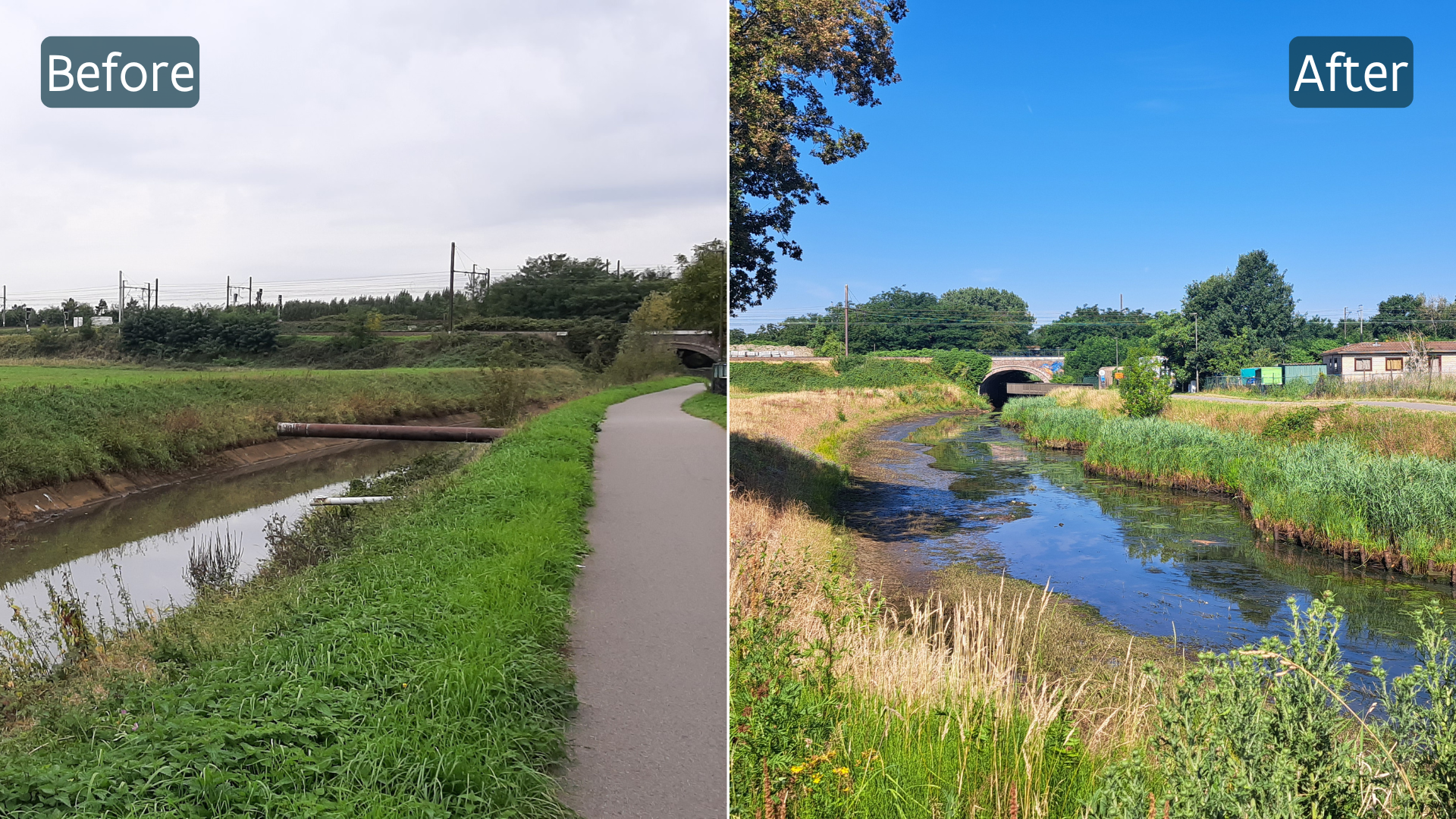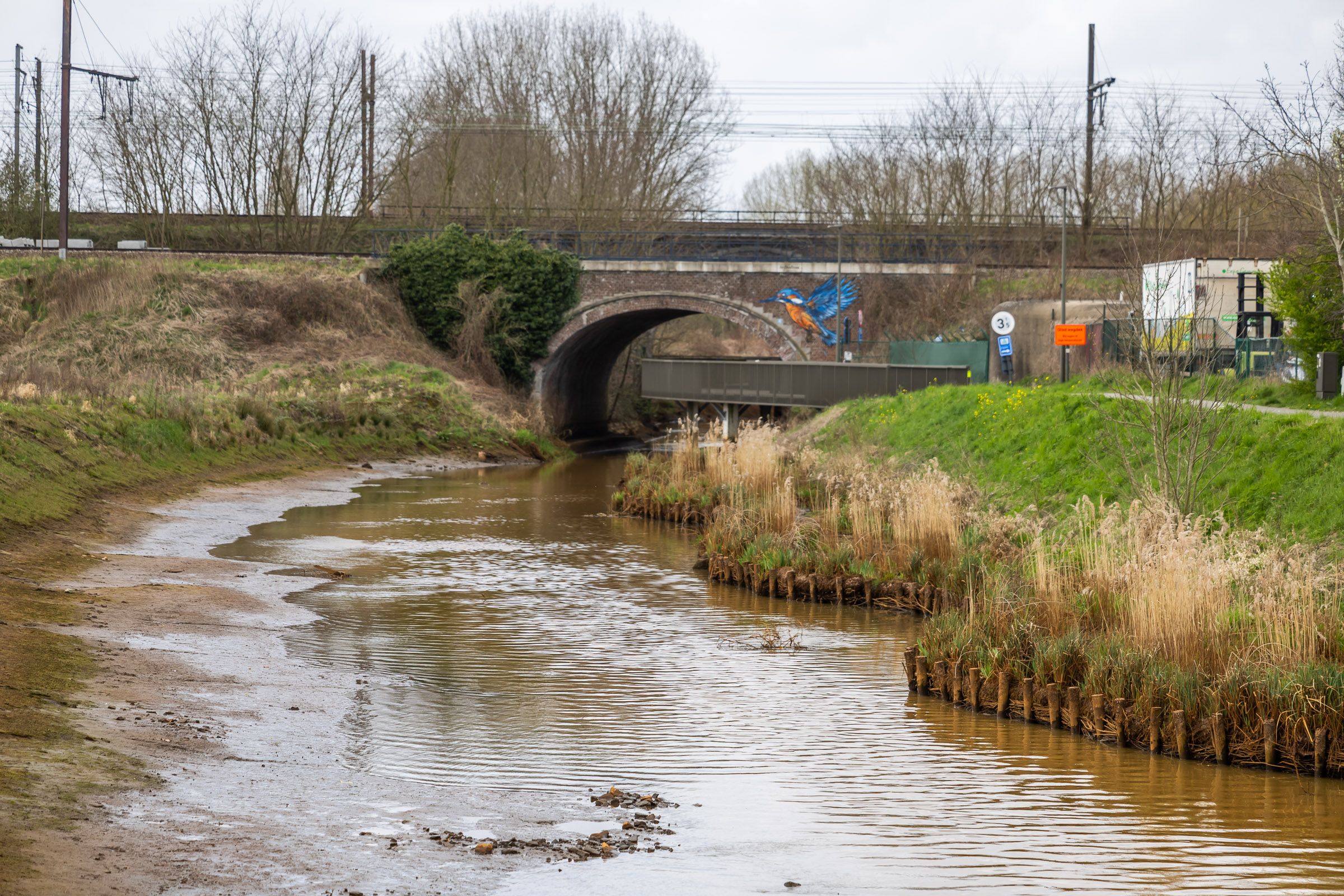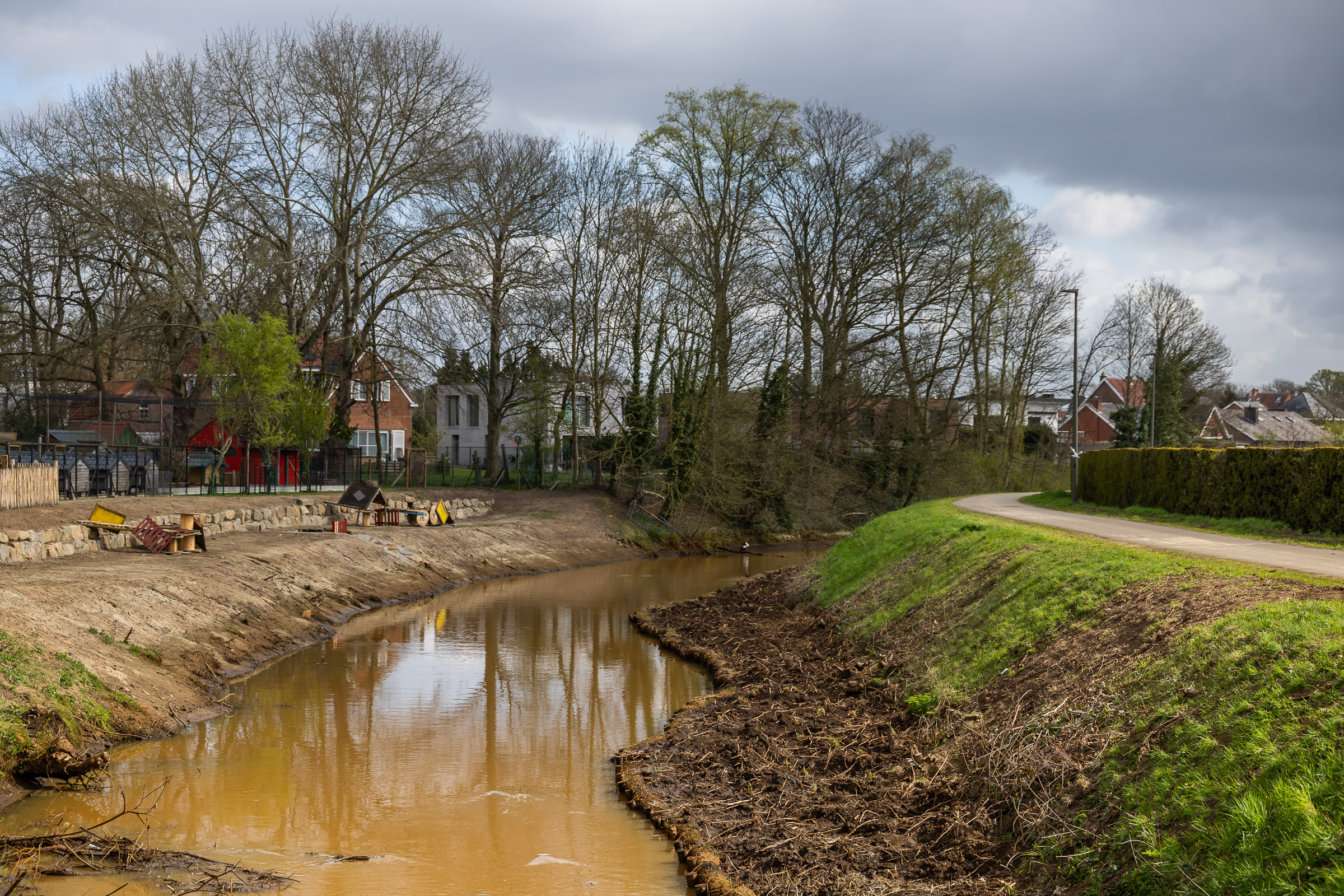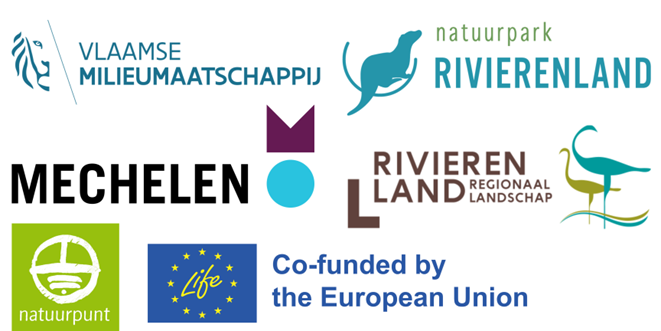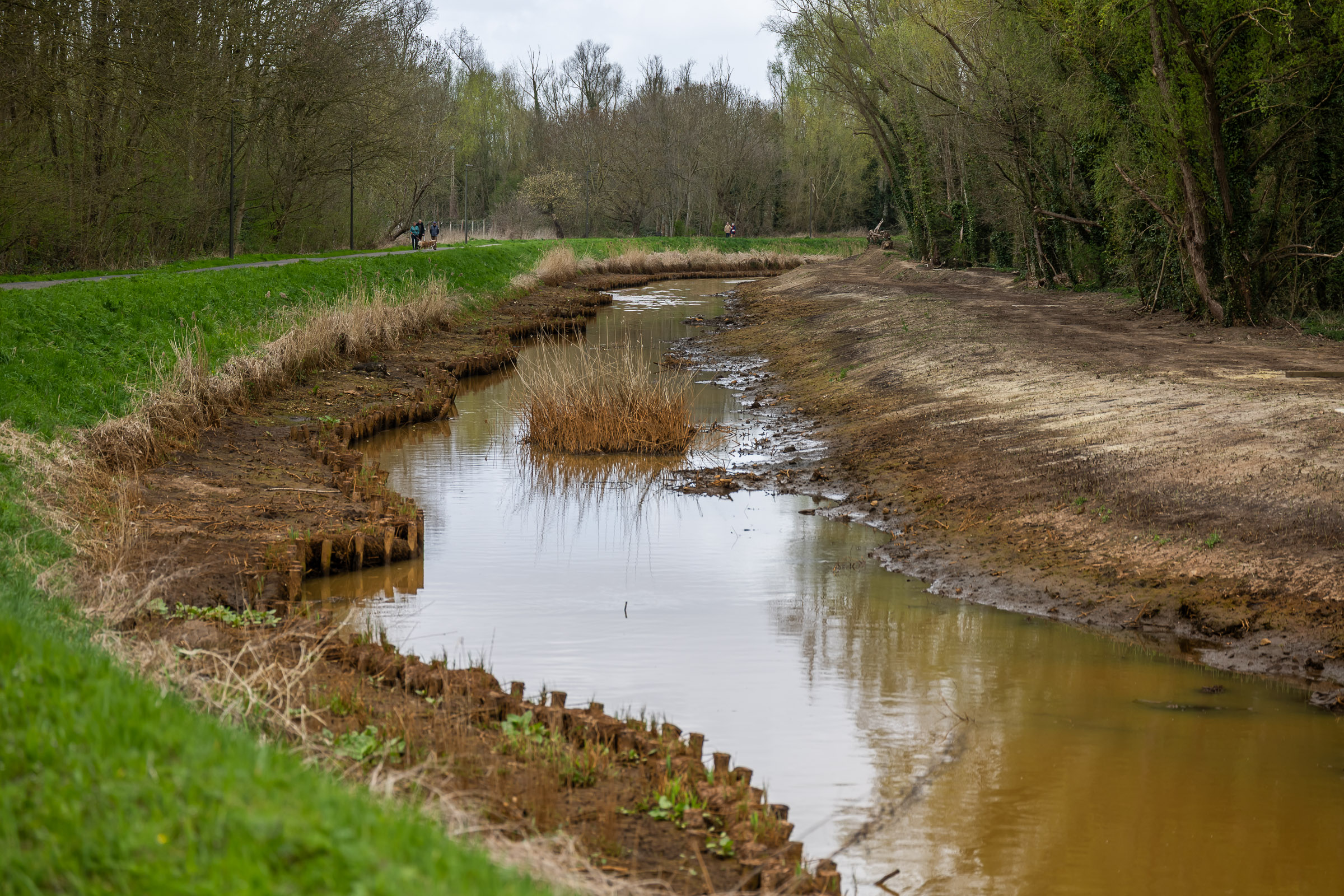
Ecological transformation of the Vrouwvliet
In the mid-1980s, the lower course of the Vrouwvliet was widened, deepened, embanked, and reinforced with concrete banks and steel sheet piling. This eliminated the natural transition between land and water, and the bank vegetation - vital for local aquatic life - was no longer able to thrive.
Restoration of aquatic life and water quality
Over the past year, the VMM restored the banks of the Vrouwvliet. At various locations, up to 1000 tons of concrete bank protection were removed and the banks were lowered. The gently sloping banks now offer many opportunities for native plants and animals.
To ensure stability, the concrete banks could not be removed in some zones. In those areas, a shallow zone with bed reeds was created in the Vrouwvliet. Wooden stakes - around 6.000 in total - with bent willow branches and a coconut fiber roll in between prevent the newly planted reeds from sinking.
Extra space for the watercourse
The ecological restoration of the banks also created extra space in the watercourse. In the restored zone, the Vrouwvliet can now store an additional 15.000 m3 of water. This strenghtens the area's resilience against heavy rainfall, which is expected to occur more frequently in the future. The redevelopment is a win-win for both ecology and the climate resilience of the watercourse.
De-paving at Tivolipark parking area
Near the Tivolipark in Mechelen, a former parking area was de-paved and the bank near the petting zoo was redesigned. A wooden boardwalk now offers a pleasant spot to relax close to the water.
Blue Deal and LIFE Wetlands4Cities
This project is part of the Blue Deal, the Flemish Government's program to combat water scarcity and drought, and the LIFE Wetlands4Cities action program. This European initiative focuses on restoring and strenghtening urban wetlands as natural climate buffers.



